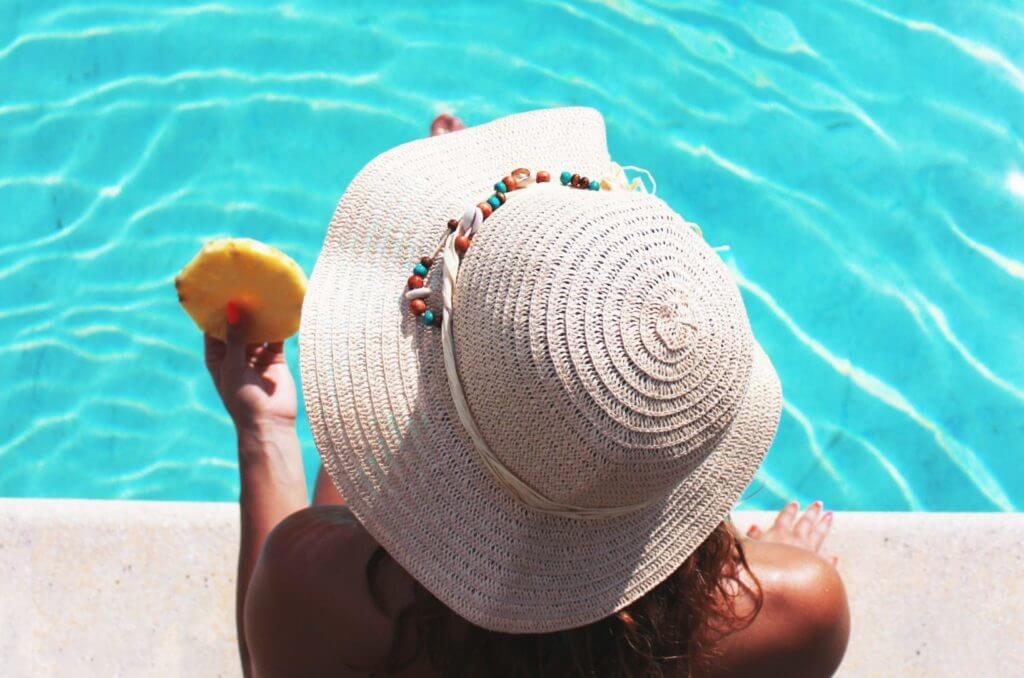Everyone loves jumping in the pool on a hot summer day. It’s a fun activity, cools you off and brings the family together. But when a pool has that nasty, burning chlorine smell, it can make you want to avoid swimming altogether.
Many people think that smell comes from too much chlorine in the pool. What they don’t know, however, is that what they are smelling is not actually chlorine, but chloramines.
This is a fixable problem, and here we will explore some of the solutions to getting your pool feeling and smelling fresh, so you and your loved ones can hop in and enjoy your pool without having to put up with any harsh chemical odors.
Free Chlorine vs. Chloramines
Chloramines are chemical compounds that occur when chlorine disinfectants combine with organic substances such as sweat, oils, skin cells and urine in the pool. When chlorine is added to pool water, two active chemicals are released that kill bacteria – hypochlorous acid and hypochlorite ion.
These chemicals, once combined, are known as “free available chlorine” or FAC, because they are available to react with contaminants and actively sanitize the water. Proper FAC levels in your pool water mean that the chlorine you added is able to effectively do its job. The problem arises when too many contaminants exist in the water, and FAC levels drop.
When hypochlorous acid interacts with ammonia, which is a component of sweat and urine, chloramines are formed. Chloramines are less effective as a sanitizer and are the main cause of skin and eye irritation as well as the strong chlorine smell in pools.
After too much exposure, chloramines may even contribute to respiratory problems, such as asthma, so they are definitely something you want to minimize or eliminate in your pool water. Chloramines, not chlorine, are in fact the real culprits when it comes to a pool with a strong chlorine odor.
Ways to Get Rid of Chloramines
1. Add more chlorine
By shocking the pool with extra chlorine once a week, you will destroy ammonia as well as contaminants in the pool and reach a higher FAC level. This will reduce the level of chloramines in the pool, causing the odor and water quality to improve.
2. Try a non-chlorine shock
There are various ways to oxidize and sanitize pool water beyond chlorine alone. Some people prefer non-chlorine pool treatment chemicals due to chlorine sensitivity or other reasons.
3. Use a secondary or supplementary sanitizer
A great way to lower chloramine levels and enhance the water quality of your pool is to use secondary sanitation such as Advanced Oxidation Process (AOP), ozone, or UV. This will provide additional sanitizing power to you pool, lowering the amount of chlorine you need to add to your pool as well as protecting against dangerous chlorine-resistant viruses, like Cryptosporidium parvum.
4. Properly maintain your pool chemistry
Test your water regularly and make sure it is properly balanced. Water care is very important for keeping your pool smelling and feeling fresh.
Enjoy Your Clean Water
Nobody likes a pool that smells like chlorine, burns their skin and irritates their eyes. To have a pool that you can truly love, you need to take care of it on a regular basis and give it the oxidation it requires.
To make sure your pool doesn’t have a strong chemical smell, follow the steps above and consistently monitor your pools’ pH balance. And most importantly, don’t forget to enjoy your fresh, clean and odorless water!




